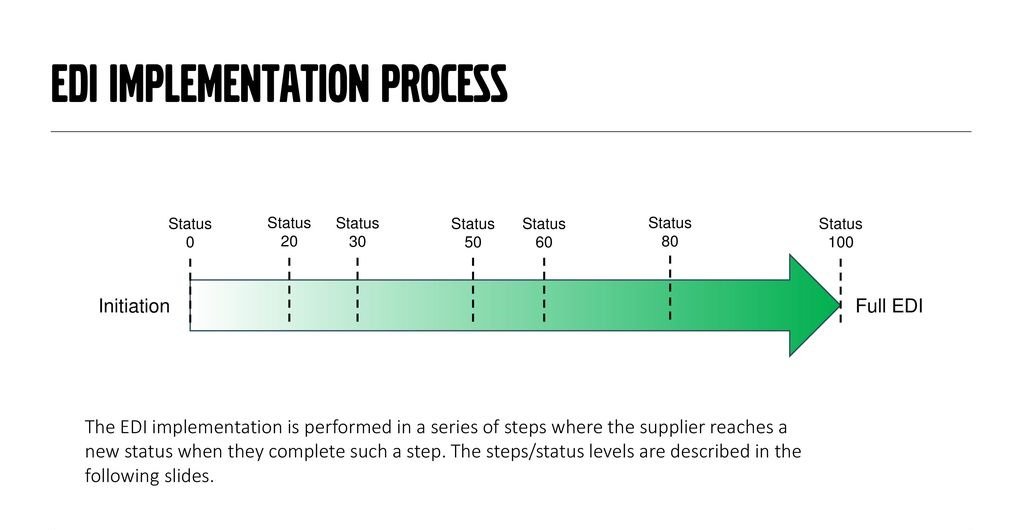EDI standards implemented:- Before using EDI, the trading partners must set up a trade agreement that will define all the parameters of EDI.
- Each partner in an EDI trade agreement must independently determine a method to translate internal data to and from EDI formatted messages.
- Each partner must agree on the communications media and arrange the method for transmitting the information. This may involve any of several methods such as a dedicated communications link, a VAN, or the Internet.
- Each partner must provide for system recovery in case of failure or error, security, and timely response.
For example, Walmart has a free EDI implementation guide that details all the steps a prospective supplier must take to become EDI compliant. Not limited to:1. Obtain access to Retail Link – an internet-based tool created by Walmart, which allows suppliers to access point-of-sale data and other important information
2. Complete AS2 Testing – A trading partner must successfully send and received at least one file with Walmart
3. EDI Data Testing – the supplier must be able to send all EDI transactions within the basic EDI document set
After the successful completion of all elements of Walmart’s EDI implementation guide, a given supplier would have fully implemented EDI with the retail giant. But as you can see, there are a lot of hoops to jump through for an EDI implementation.
Clearly, implementing an EDI solution internally and with all of your trading partners presents challenges. Oftentimes, businesses will drastically underestimate the time and expense required for an EDI implementation. However, it’s how you handle these challenges that can be the difference between being open for business and not being able to trade with your business partners.

EDI Standards Implemented
The sender must convert data from an internal system to EDI formats for transmission. The receiver must be ready to receive transmissions in a timely fashion as agreed by trading partners.
This could be instantaneous or at regular time intervals. The receiver converts the EDI transmission data to the internal system for processing.
Each transaction set represents a single business form. The header area contains preliminary information such as business name, address, date, etc. Next is the actual transaction information, the item, description, quantity, etc.
Where each line corresponds to one segment and each item in the segment is a data element. Last is the summary data which contains the control information.
Each data element is assigned a unique reference number in the EDI master data element list.
The transfer of information can be done by any electronic media from magnetic tape to telecommunication. EDI standards are designed to be independent of communications media.
Before any transaction can occur the sender and receiver must ensure that a valid connection has been established.